Michigan grape scouting report – May 28, 2025
Check out the latest Michigan Grape Scouting Report for timely updates on weather, vine growth, disease management, and pest activity. Stay informed and make proactive decisions to support vineyard health and productivity.

Weather update
Detailed seven-day forecasts for Michigan grape production regions are available below:
- Southwest Michigan: Benton Harbor, Fennville, Lawton
- Southeast Michigan: Romeo
- Northwest Michigan: Old Mission, Petoskey, Traverse City
Agricultural Weather Outlook: Weekly in-season weather updates are provided to the Michigan State University Extension fruit team by Jeff Andresen, Michigan State University (MSU) agricultural meteorologist. These reports offer timely insights into weather conditions affecting fruit production across Michigan.
Growing degree day (GDD) report
Track vine development using the MSU Enviroweather Growing Degree Day (GDD) map. Visit the site to find your nearest weather station, create a free account, and monitor GDDs daily: MSU Enviroweather GDD Tool.
Weekly GDD summary (base 50 degrees Fahrenheit)
The table below summarizes current GDD accumulation, last week's totals and the weekly increase for each monitored location across Michigan:
|
Location |
Current GDD (Base 50 F) |
GDD Last Week |
Weekly Accumulation |
|
Benton Harbor (SWMREC) |
451.9 |
417.5 |
34.4 |
|
Fennville |
388.2 |
358.5 |
29.7 |
|
Lawton |
452.3 |
414.6 |
37.7 |
|
Average – Southwest Michigan |
430.8 |
396.9 |
33.9 |
|
Romeo |
374.1 |
345.4 |
28.7 |
|
Average – Southeast Michigan |
374.1 |
345.4 |
28.7 |
|
Old Mission |
208.6 |
188.8 |
19.8 |
|
Petoskey |
212.3 |
186.1 |
26.2 |
|
Traverse City (NWMHRS) |
238.6 |
215.6 |
23.0 |
|
Average – Northwest Michigan |
219.8 |
196.8 |
23.0 |
Weather forecast
This week will see a continuation of the slow warmup that started over the weekend. Southern Michigan will see up to a quarter inch of rain on Wednesday, May 28, from a passing storm front. Northern Michigan does not expect any precipitation over the next week. The 60s and 70s should transition to the 80s early next week. Parts of southern Michigan are seeing abnormally dry soils, according to the U.S. Drought Monitor. The 8–14-day forecast is for above average chances of rain, but we are not expecting any significant accumulations over the next seven days.
Vine growth
In southern Michigan, little movement occurred last week. Juice grapes and early hybrid wine grapes are over 12 inches of shoot growth, with clusters expanding and elongating. Early bloom has been seen on Brianna cultivar at the Southwest Michigan Research and Extension Center. Early hybrids and Vitis vinifera cultivars are around 6-12 inches of growth.
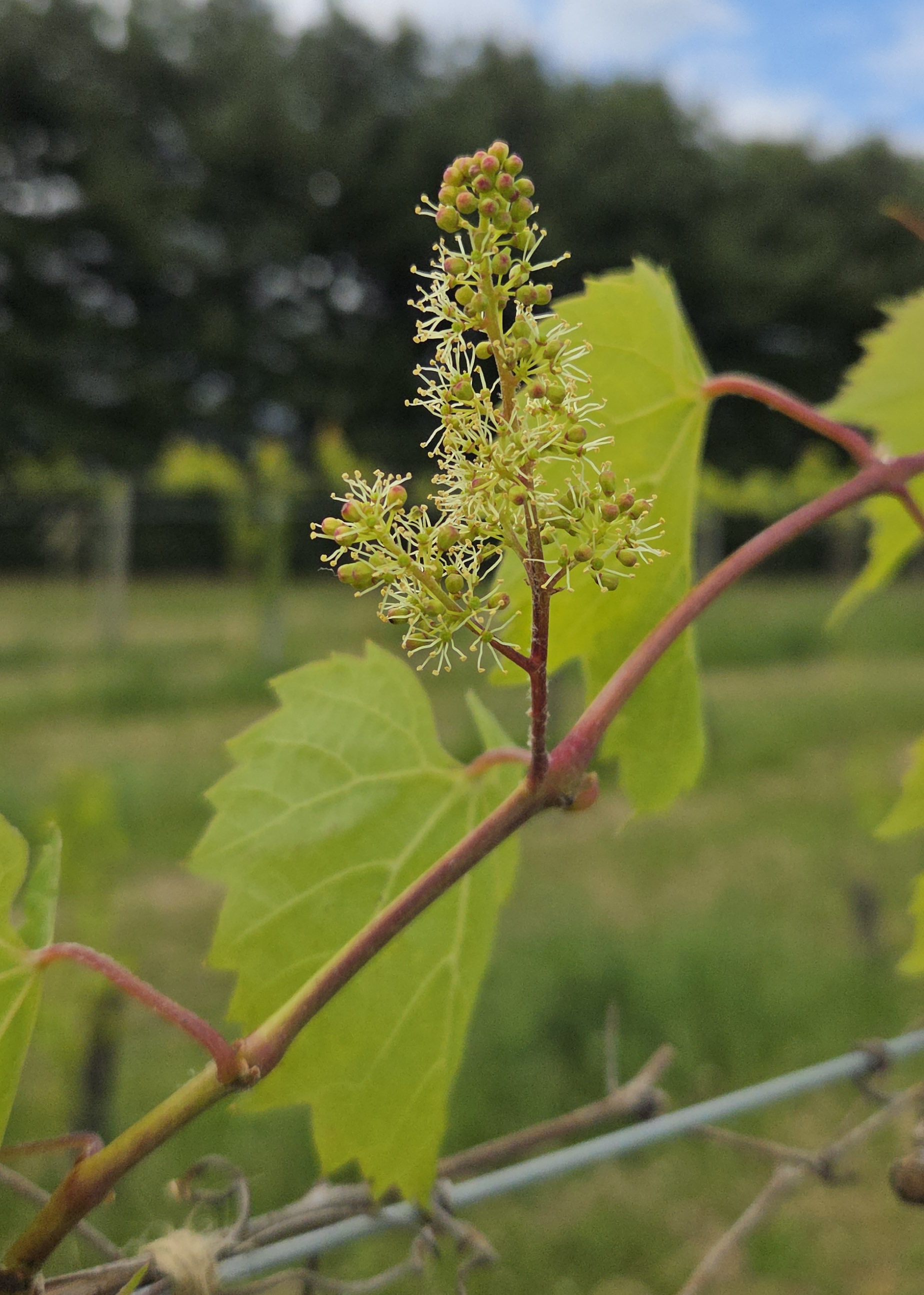
In northern Michigan, all Vitis vinifera varieties have passed budburst, but development has been slow due to last week’s cool weather. Most vines are now showing about two fully expanded leaves. While growth is progressing, it remains early in the shoot development stage, and vines are still vulnerable to environmental stress, particularly late spring frost. Continue to monitor weather conditions and apply frost protection measures as needed. Tracking phenology at this stage helps inform timely decisions for pest management, fertilization and canopy work. For reference, see MSU Extension’s Grape Growth Stages chart.
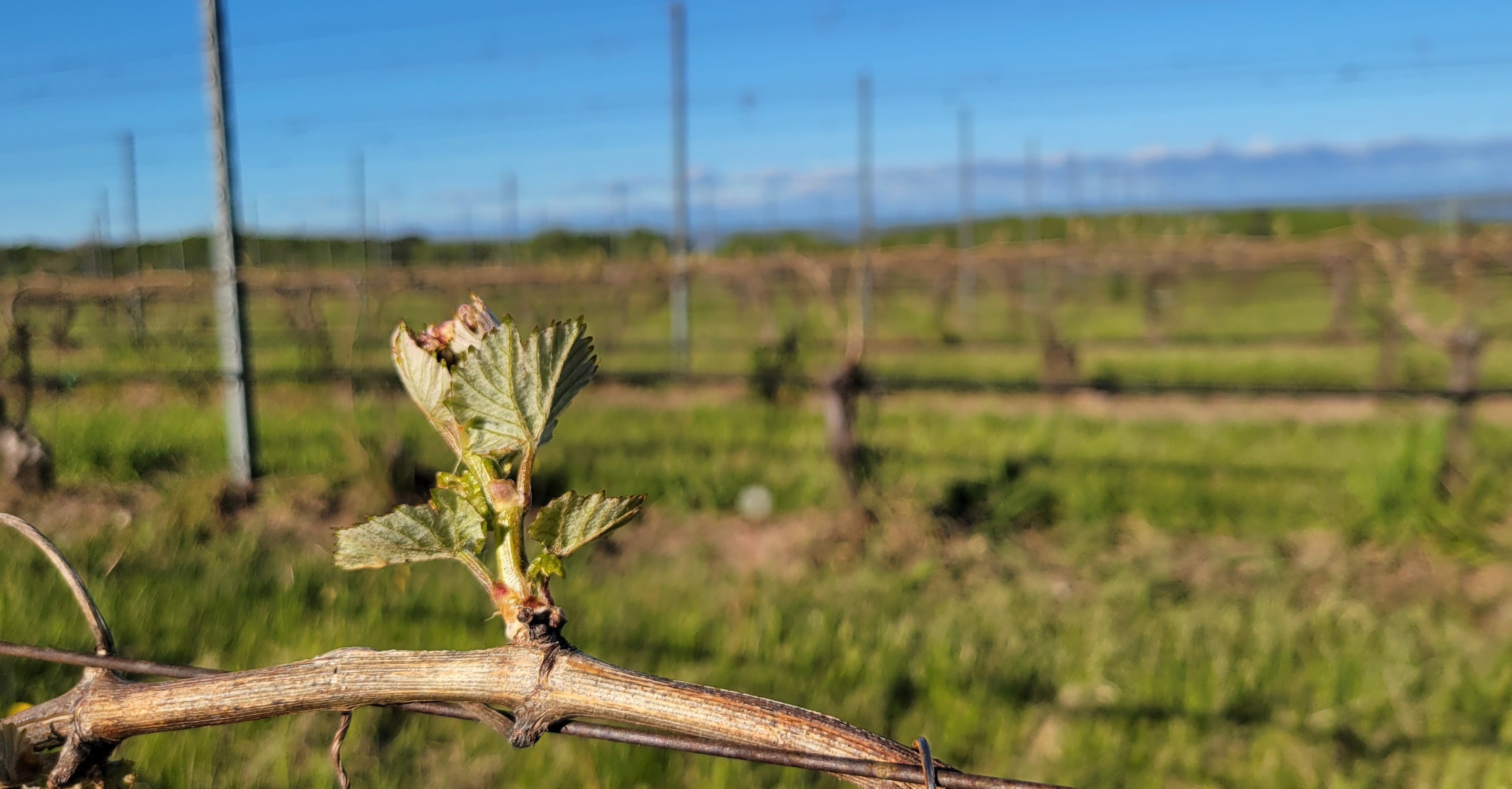
In the Tip of the Mitt American Viticultural Area (AVA), hybrid cultivars are still at the 1- to 3-inch shoot stage, while Vitis vinifera varieties are still at bud break, with some showing two or three small leaves. The cooler weather is providing for a gradual entry into the 2025 growing season. It’s time to begin applying protective fungicides this week.
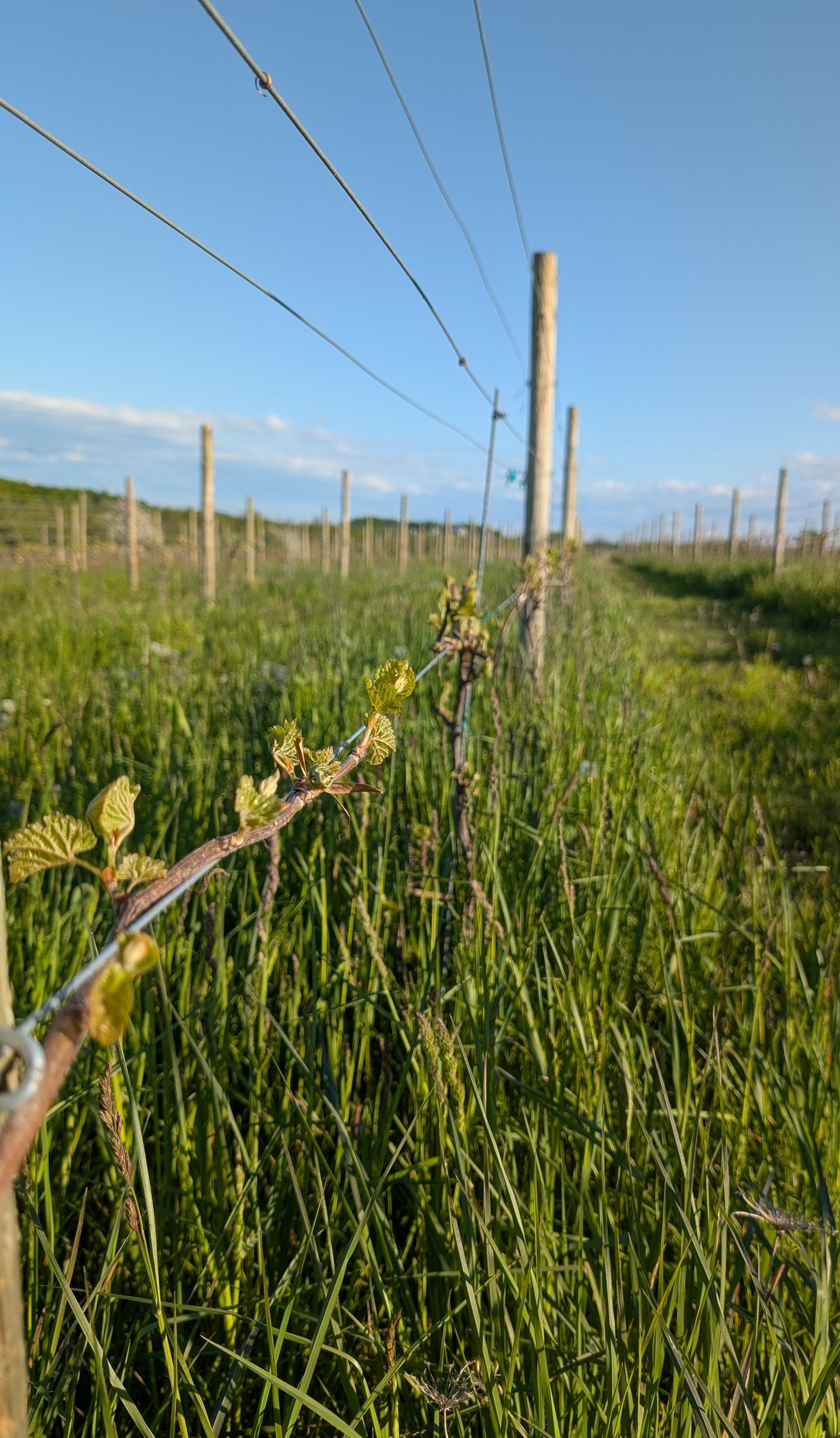

In southeast Michigan, Concord’s grape shoot extension has been observed as long as 18 inches in Hartland. Measurements taken on May 22 at Youngblood’s in Ray Township showed 8-inch shoot growth in Frontenac, 4-inch shoot growth in Petite Pearl and 8-inch shoot growth in Marquette.
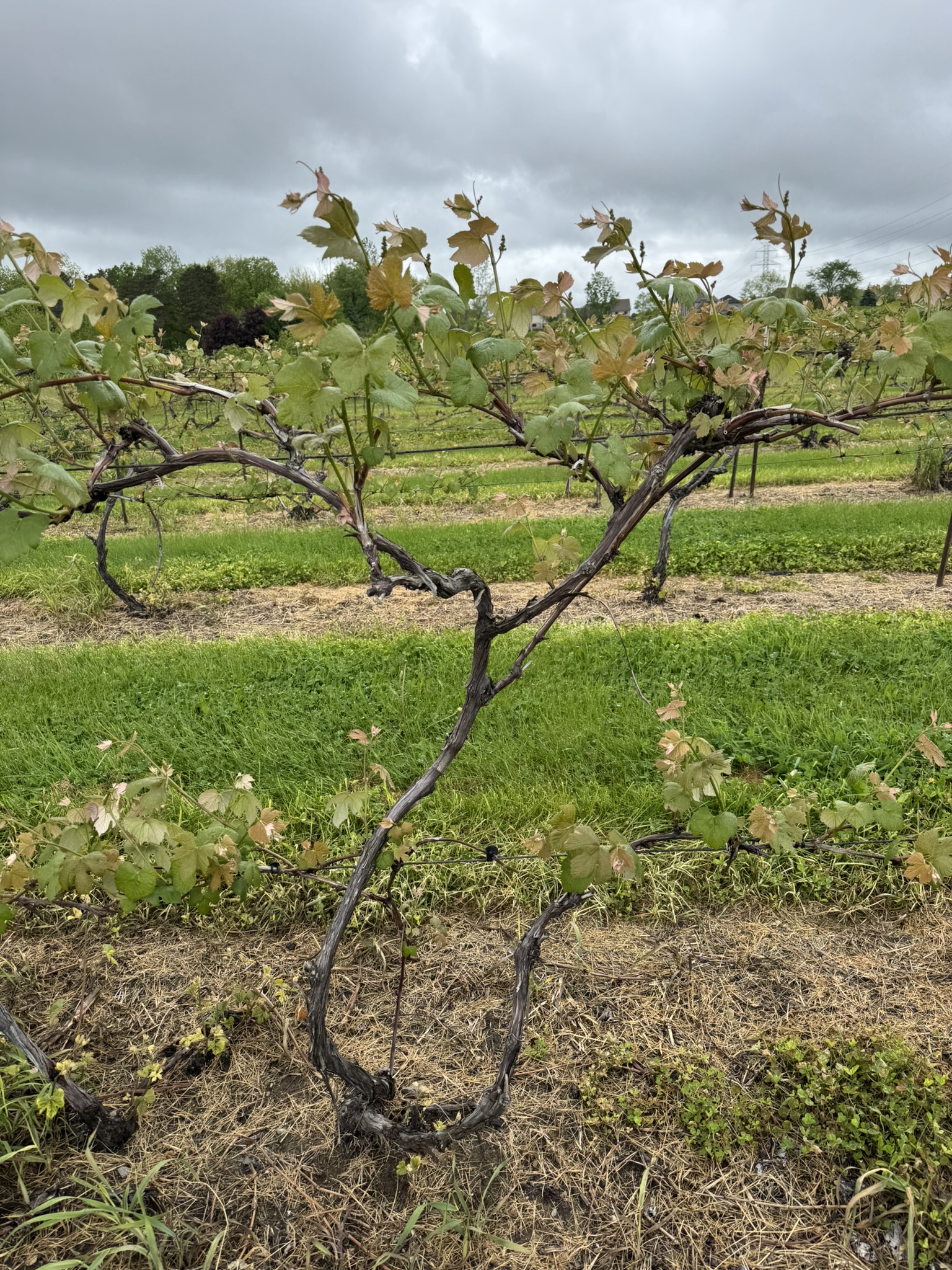
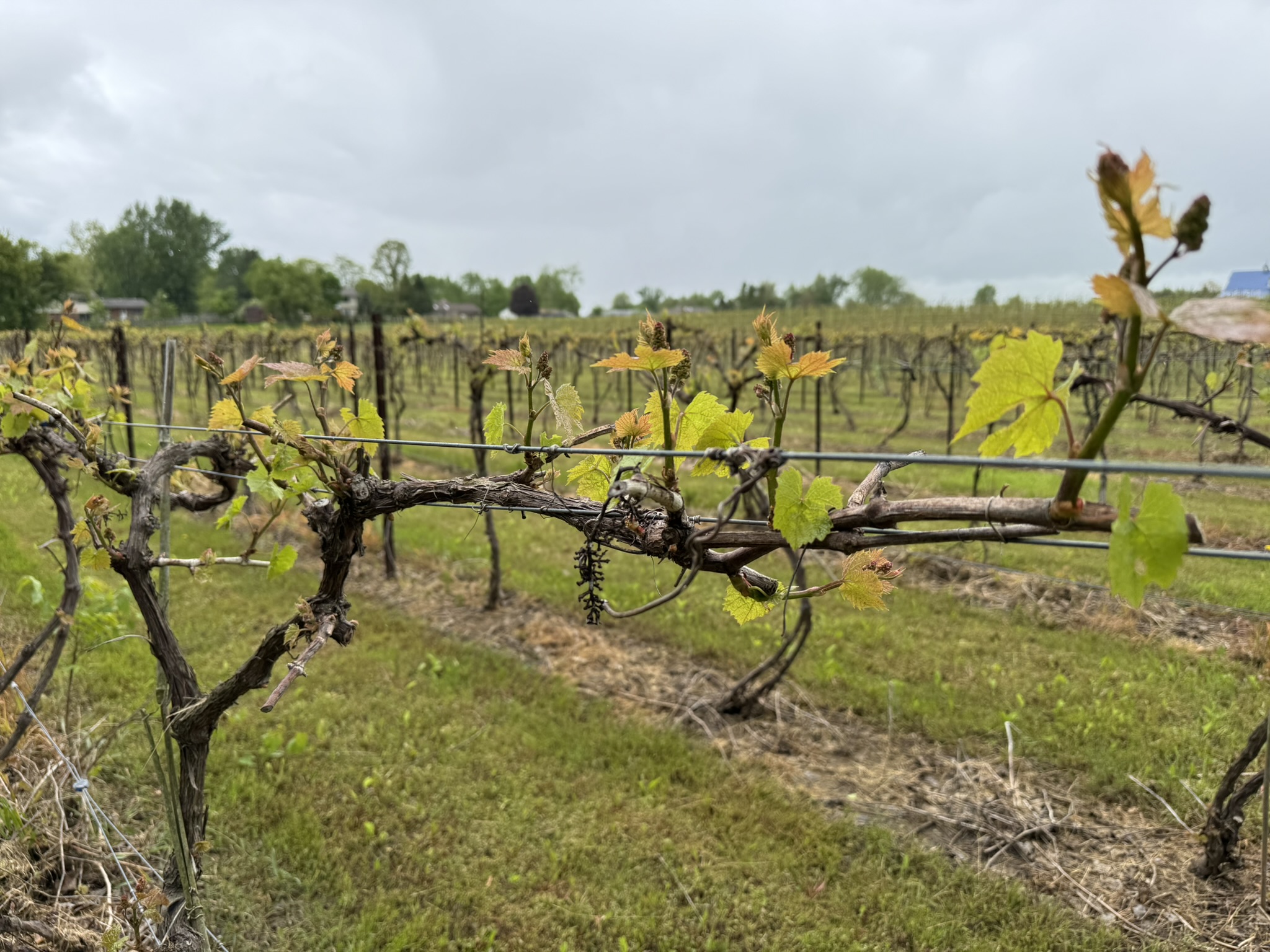
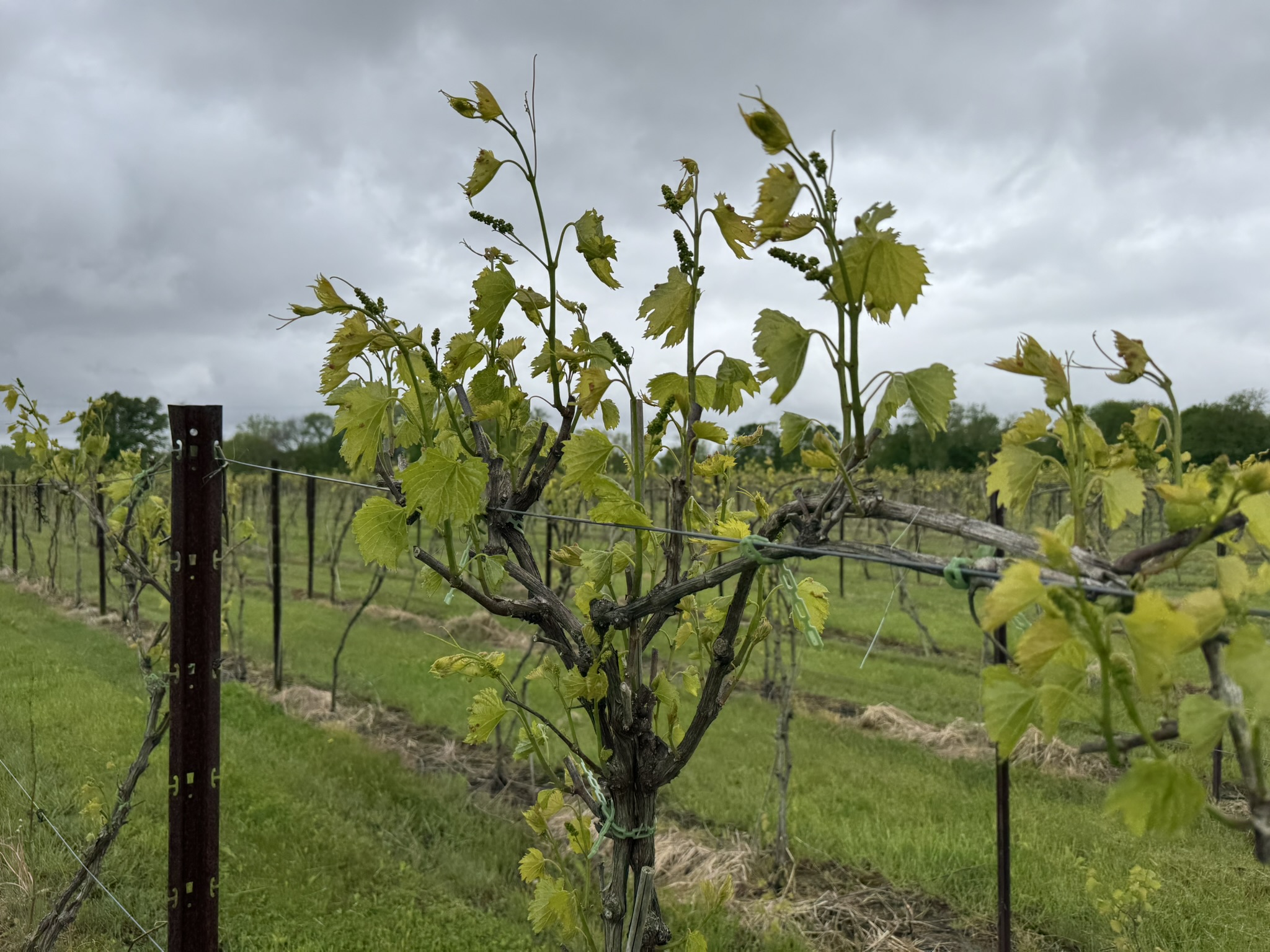
Horticulture
Accurate assessment of vineyard nutrient requirements is essential for optimizing vine health, fruit quality and yield. Implementing soil testing and petiole analysis provides critical data to inform nutrient management strategies. A quality soil test or a previous year’s petiole analysis is important in understanding which nutrients the vineyard needs.
Petiole analysis should be done at bloom and veraison, and at specific stages of vine development when nutrient concentrations in the petiole are most stable and representative of the vine's overall status. The most widely recommended timing for petiole sampling is at full bloom, which occurs when approximately 70% of the flowers on a cluster are open. This stage provides the most reliable data for key nutrients such as nitrogen, phosphorus, potassium and micronutrients.
An alternative or complementary sampling period is at veraison, when about half of the berries on a cluster begin to change color or soften. Sampling at veraison can be useful for monitoring nutrients like potassium, magnesium and boron later in the season or for tracking changes in nutrient dynamics over time.
The accuracy of petiole analysis depends heavily on sampling the correct leaf position. At full bloom, the petiole should be collected from the leaf that is directly opposite the basal grape cluster, typically the fourth to sixth leaf from the base of the shoot. This leaf is considered physiologically mature and reflective of the vine’s nutrient reserves at bloom. At veraison, petioles should be collected from recently matured leaves, generally located around the fifth to seventh leaf from the shoot tip.
A representative sample should include petioles from a sufficient number of vines across the block or variety, ideally 60 to 100 petioles collected from at least 20 to 25 randomly selected, healthy vines. Leaves chosen for sampling should be free of visible disease, pest damage or physical injury. To avoid contamination, petioles should be collected with clean tools and placed in a paper bag (not plastic) to allow for air drying. Samples should be clearly labeled with block, variety, date and phenological stage, and should be dried or delivered promptly to a testing laboratory.
When properly conducted, petiole analysis provides a clear snapshot of vine nutritional health and supports informed management decisions that contribute to balanced growth, fruit development and overall vineyard sustainability.
Soil tests evaluate nutrient content, pH levels and other soil characteristics, offering insights into the soil's fertility and potential nutrient deficiencies. Petiole analysis, which involves testing the leaf of grapevines, directly measures the nutrients absorbed by the plant, providing a more immediate understanding of the vine's nutritional status. Regular monitoring through these methods allows for timely adjustments to fertilization practices, ensuring optimal nutrient availability throughout the growing season.
During the early stages of vine growth, particular attention should be given to the application of nitrogen, zinc and boron, as these nutrients are vital for shoot development and flowering. Potassium and magnesium are also important during this period, supporting various physiological processes within the vine.
Nitrogen plays a crucial role in vegetative growth and fruit development. However, its application must be carefully managed:
- Excessive nitrogen: Can lead to delayed flowering and excessive vegetative growth, potentially compromising fruit set and quality.
- Insufficient nitrogen: May result in reduced vine vigor, leading to lower yields and diminished fruit quality.
Therefore, precise nitrogen management, informed by soil and petiole analyses, is essential to balance vegetative growth and fruit production effectively. Shoot thinning will begin in the southern vineyards in the next week or two. Shoot thinning is an important canopy management tool to improve air circulation, minimize disease pressure, reduce shading, and improve spray penetration. The right time for shoot thinning time is when the shoots are 5-12 inches long.
For more comprehensive information on shoot thinning and other early season vineyard management practices, please refer to the article, "Early season vineyard management."
Diseases
During this time of the year, the primary diseases of concern for grape growers are phomopsis, black rot, anthracnose and powdery mildew. If you're seeking detailed insights into pre-bloom fungicide options and the effects of rain on disease spread, refer to previous grape scouting reports or exploring an article on early-season disease management. It's worth noting that some growers have recently observed isolated cases of downy mildew infections in northern vineyards. Southern vineyards have been seeing early infections of phomopsis and are beginning to see black rot lesions.
As bloom continues in southwest Michigan, start choosing fungicides that control all the fruit diseases. For example, with downy mildew we are most concerned with fruit infection at this time and sprays should be timed prior to bloom and at bloom for optimal control. Downy mildew is caused by a fungal-like organism, so many site-specific systemic fungicides that target other spring diseases do not work on downy mildew. Effective fungicides for downy mildew include products in FRAC codes 4, 11, 21, 40 and 45 as well as phosphorus acid salts and some biologically-based products.
With the exception of powdery mildew, these spring disease infections typically require rain events. It only takes 0.1 inches of rain above 50 F to trigger a possible infection. Viticultural practices that reduce canopy wetness such as good irrigation timing, leaf removal and good weed management can reduce many of these diseases in a vineyard. Typically, DMIs (FRAC 3), captan and EBDCs (FRAC M3) are effective for phomopsis, black rot and anthracnose.
Insects
Grape berry moth adult populations are increasing across the state. First generation berry moth larvae have been detected in grape clusters in recent weeks in southwest Michigan. Based on the degree day model for this pest, the start of the second generation egglaying is expected in late June/early July in southwest Michigan, proceeding later into July at further north locations.
The first signs of grape cane gallmaker activity were detected this week in southwest Michigan. Grape tumid gallmaker infestation, rose chafer feeding and sightings of potato leafhopper are still present. Protect susceptible cultivars, especially in young vineyards where potato leafhopper can stunt shoot growth. Neonicotinoid insecticides such as Assail and Admire Pro can provide protection against potato leafhopper, rose chafer and tumid gallmaker if present in the same vineyard site.
Scouting in action: Using the SAM Tool to track frost and spray effects
A grower recently shared an example of how the Sustainable Agriculture Management (SAM) Tool supported timely vineyard scouting and documentation during a critical management window.
Brian Seipel, who manages Marquette grapes in Ingham County, used the SAM Tool to record weather-related damage and spray outcomes in early May. After applying Manzate Pro-Stick on May 4 and 7, a frost warning hit his area on the morning of May 9. Temperatures dropped to 32 F with high humidity—conditions that posed a risk to tender 1-2-inch shoots.
Following a reapplication of Manzate and a burst of bright sunshine, two challenges emerged in the vineyard:
- Frost damage
- Leaf cupping (possibly from photo-toxicity)
Seipel used the SAM Tool mobile app to document both events at once by uploading a photo taken with his phone, which captured geolocation data and was pinned on the vineyard map. This real-time documentation helped him track both spray-related and weather-related events.
“The best was when I had a chance to intelligently record the events in the SAM Tool,” said Seipel. “I could take advantage of my phone’s location and camera settings to record the GPS location the photos were taken. As a result, I was able to capture and upload evidence of both events in one photo. It was simple and easy. I could also see the notes I uploaded with the pictures that is pinned to the map. As a result, I will not only have record of these important events as lessons learned, but be reminded that sustainable agriculture is dynamic, with multiple challenges that are simultaneously in play. So, it’s good to have the help of technology to plan and keep score!”
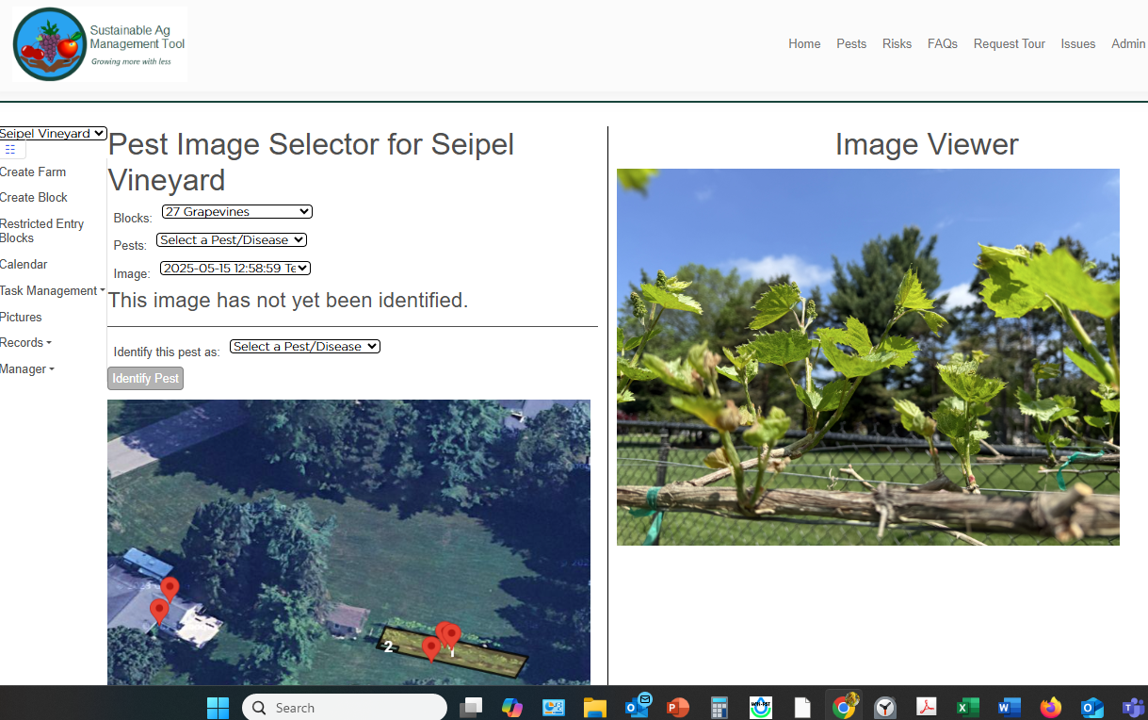
This example illustrates how the SAM Tool can support:
- Scouting with photographic and geolocated documentation.
- Timely decision-making based on spray history and environmental events.
- Recordkeeping of frost events, phytotoxicity risks, spray timing and auto-recorded weather conditions.
- Future planning with mapped data and notes.
To learn more or get help getting started with the SAM Tool, visit the SAM Tool website or contact Karen Chou at chouk@msu.edu.
Upcoming events
Michigan Grape Society’s June twilight grape growers social
The June growers’ social will be at St. Julian’s Mountain Road vineyard on June 18. In addition to the great wine and pig roast, Paolo Sabbatini will be leading a discussion on canopy management. Activities begin at 6 p.m. Register online.
Third Thursday – Biochar and Drone Demonstrations
Join us Thursday, June 19, from 1-4:30 p.m. online or at Shady Lane Cellars in Suttons Bay, Michigan, for our June Third Thursday hybrid event featuring two hands-on demonstrations:
- Biochar Production and Vineyard Applications: Learn about biochar production and its potential to improve soil health and sustainability in vineyards.
- Drone Spray Demonstration: Explore the latest in aerial spray technology and strategies to reduce chemical use in vineyard pest and disease management.
This informal, educational event is open to all and will include restricted use pesticide (RUP) credit opportunities (pending approval).
We’ll be sharing more details and the registration link soon.
The 36th annual Michigan Viticulture Field Day and 2nd annual Michigan Enology Experience
Michigan State University’s famous Viticulture Field Day on July 30 is a staple for the state’s grape growing community. The latest local viticulture research will be showcased. New last year for the winemakers, MSU partnered with Lake Michigan College to add a second day for wine making education. The Michigan Enology Experience on July 31 provides hands-on education for new and established enologists alike. View more information and registration details.
2025 Dirt to Glass Conference: Elevating Michigan Wine from the Ground Up
Join grape growers, winemakers, researchers and industry leaders Aug. 21-22 in Traverse City, Michigan, for two days of insight, collaboration and innovation. From site selection to sustainable practices and wine marketing, this event is designed to strengthen Michigan’s wine industry—one vine and one voice at a time. Register now and be part of the movement from intention to impact.
Related articles
- Early season vineyard management
- Early season control of grape berry moth in Michigan vineyards for 2022
- Rose chafer management for northwest vineyards
- Fruit insecticide registration update for 2023
- Southwest Michigan fruit update – June 4, 2024
- Michigan grape scouting report – June 8, 2022
- MSU Fruit Pest Management Guide (E-154)
- Grape growth stages
- Early season vineyard disease management
- Early season vineyard management
- A Mobile Guide for Grape IPM Scouting in North Central and Eastern U.S.
- Using the MSU Enviroweather grape berry moth model in 2018



 Print
Print Email
Email